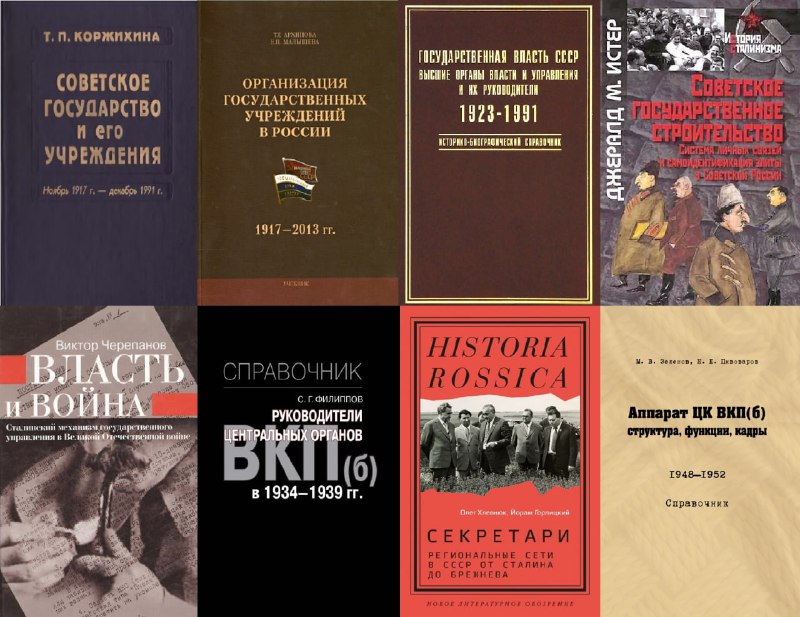group-telegram.com/newraznochinets/2799
Last Update:
Подборка книг о государственных учреждениях и партийном руководстве СССР:
Часть 2.
1. Коржихина Т.П. - Советское государство и его учреждения: ноябрь 1917 г.-декабрь 1991 г.
2. Архипова Т.Г., Малышева Е.П. Организация государственных учреждений в России. 1917-2013 гг.
3. Архипова Т.Г. (ред.) Государственный аппарат в России в годы Революции и Гражданской войны
4. Ивкин В. (сост.). Государственная власть СССР. Высшие органы власти и управления и их руководители. 1923-1991 гг.
5. Истер М.Советское государственное строительство. Система личных связей и самоидентификация элиты в Советской России.
6. Черепанов В.Власть и война: Сталинский механизм государственного управления в Великой Отечественной войне
7. Филиппов С. Руководители центральных органов ВКП(б) в 1934-1939 гг.
8. Ceкpeтари. Pегиoнaльные ceти в CССР от Cтaлина до Бpeжнева
9.Зеленов М., Пивоваров Н. Аппарат ЦК ВКП (б): структура, функции, кадры. 1948–1952.
10. Государственность России. Виды и разновидности документов советского периода (1917-1991).
BY Новый разночинец

Share with your friend now:
group-telegram.com/newraznochinets/2799
